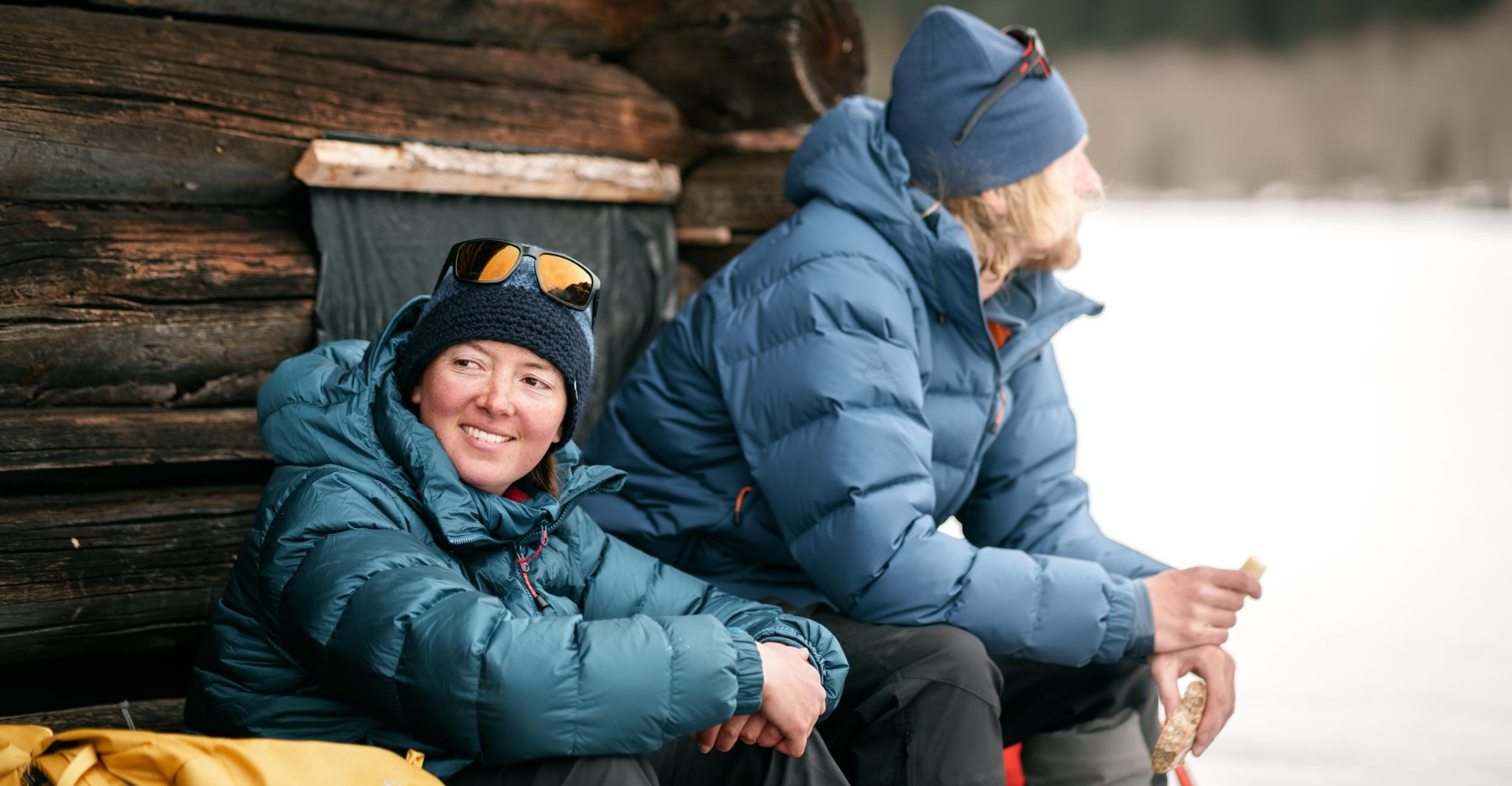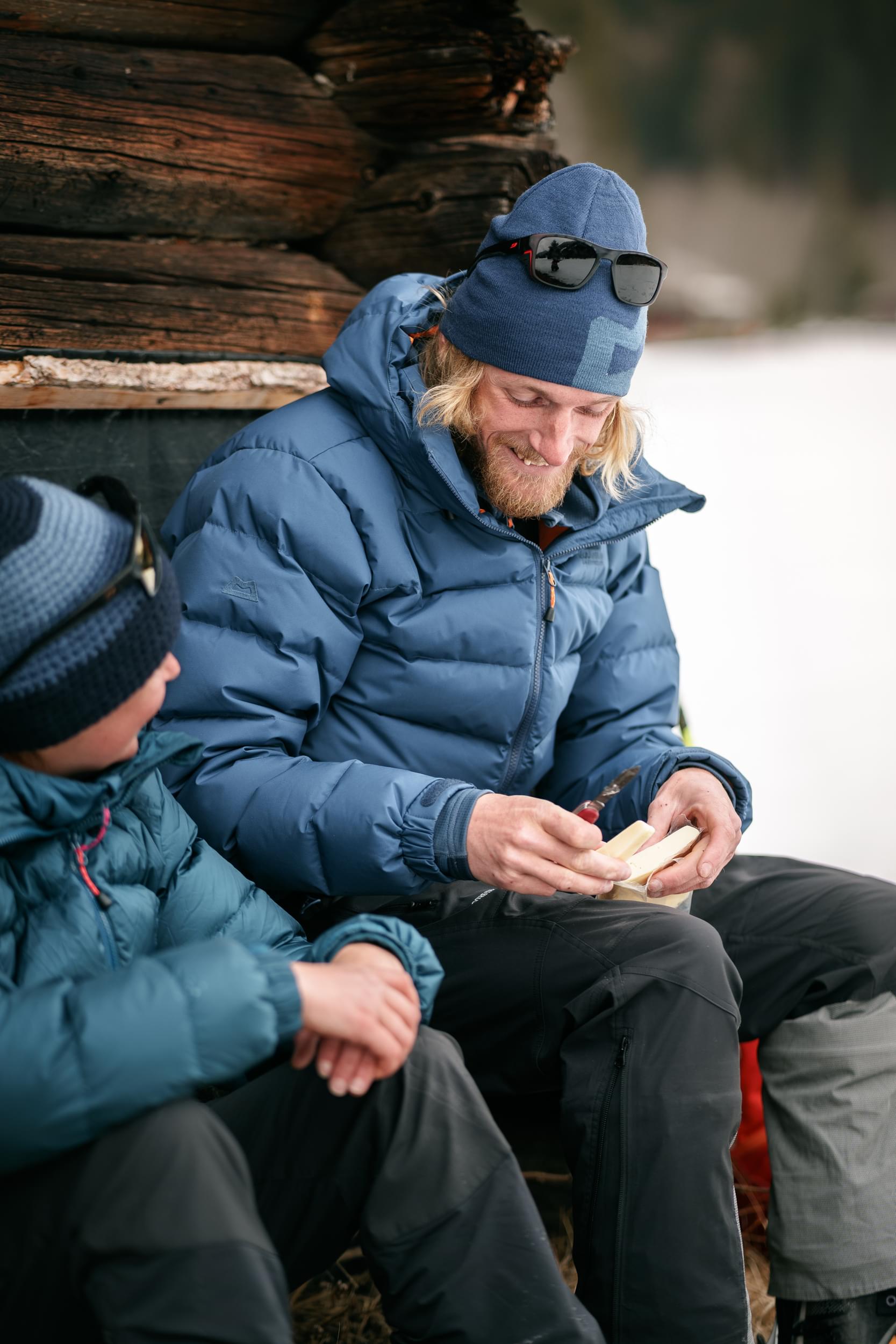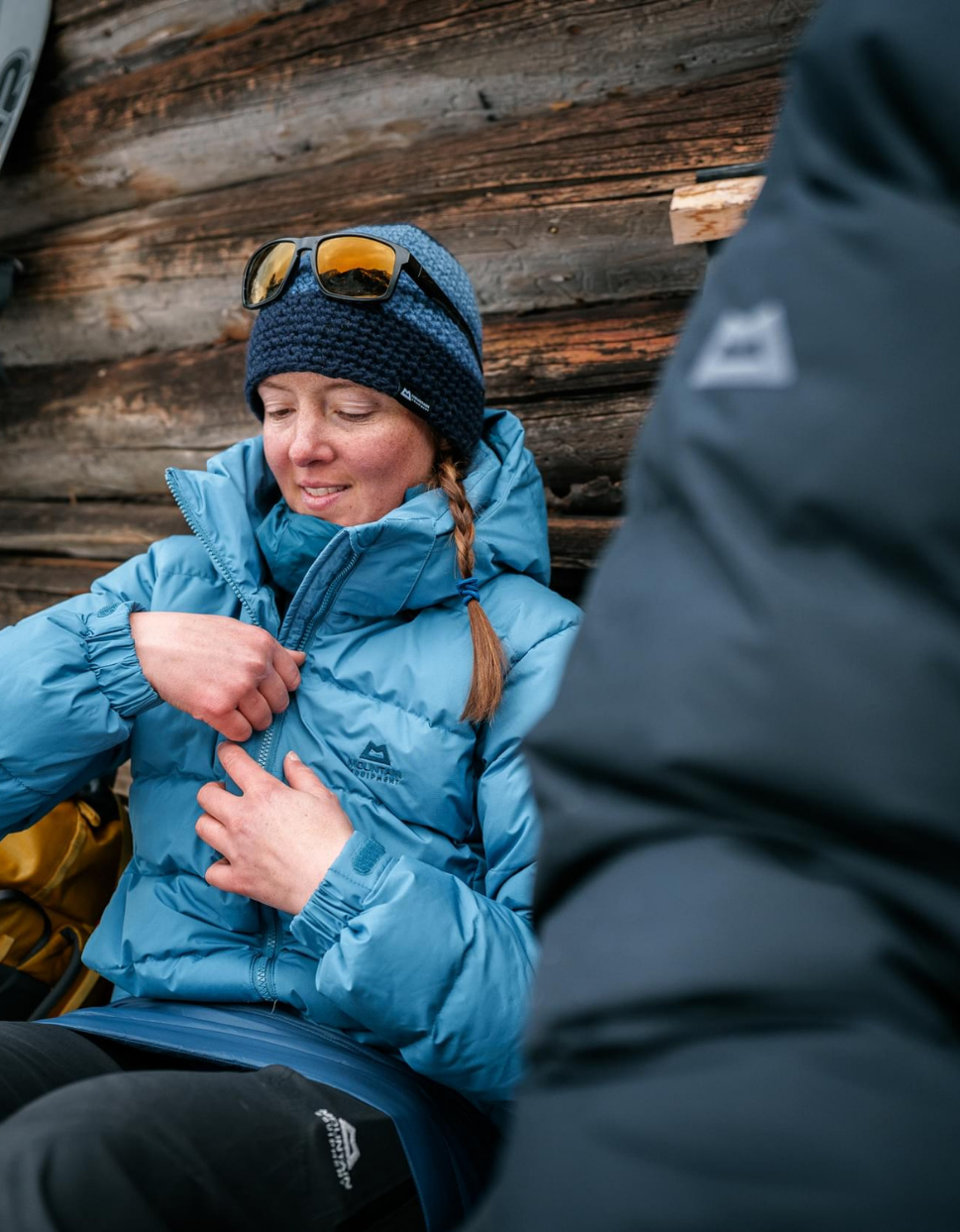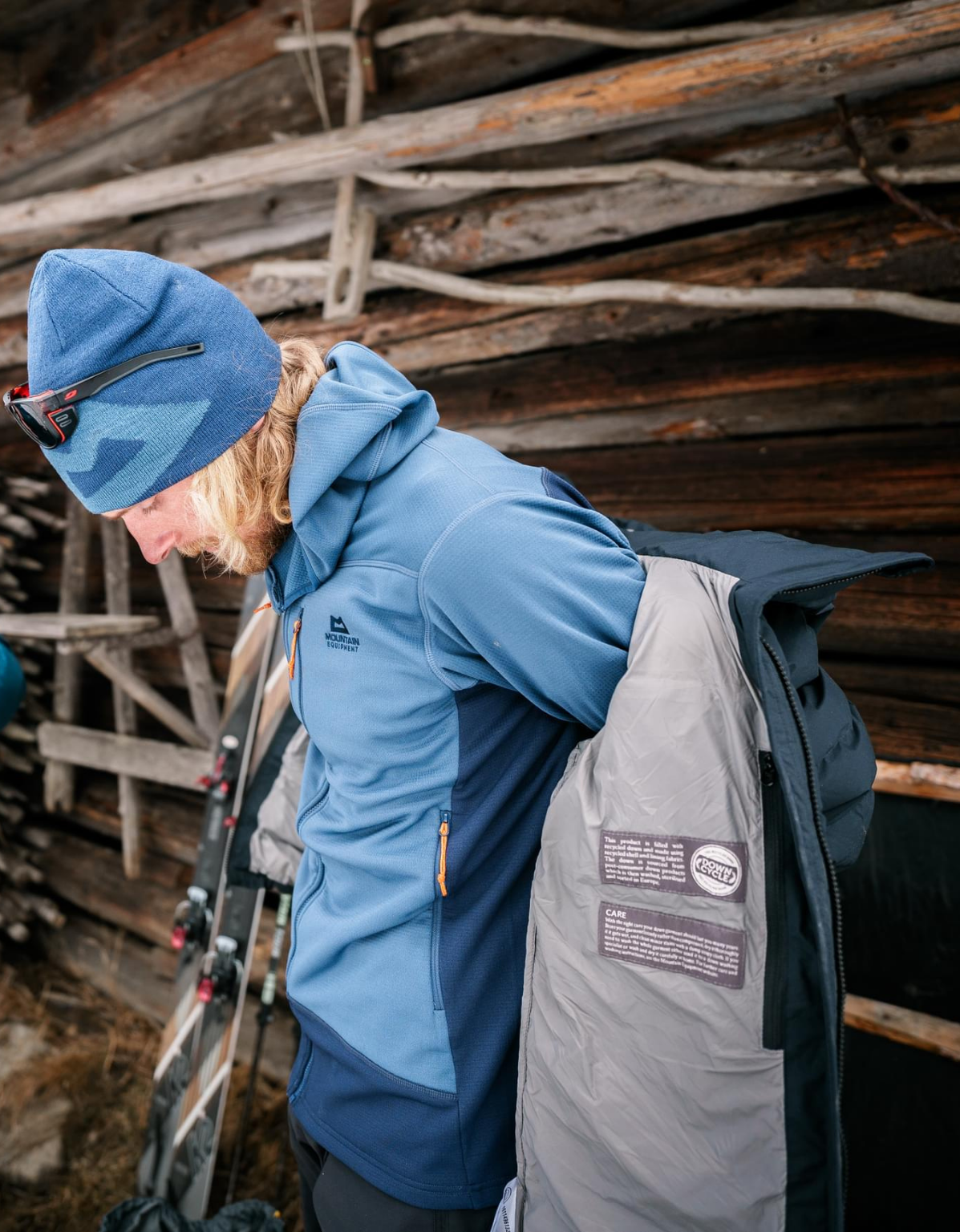The DOWN CODEX in Context
- Responsibility

A lot has changed in the last ten years. In 2010 the eruption of Iceland’s Eyjafjallajokull volcano was causing the aviation industry serious problems, and the brand new iPad was persuading you that tablets were not just something to cure illness. Now, Covid-19 has caused aviation more issues than any volcano, and the world is holding out for a tablet that will cure it. Over the last ten years, huge changes have happened in the down industry too.
Origin story
Manufacturers have always focussed on the quality and performance of their products: how they look, how they feel, how they perform. The quality of their products is what mattered most, what fed success and what brands like ours spent most of their time perfecting. Consequently, there was little time or need to focus on everything else. The ‘everything else’ included considerations about a product’s whole life cycle: environmental aspects, ethics and welfare.
This meant that brands knew more about the products they were selling than what they were buying, and this was particularly true for down and feather products. Whether manufacturing a sleeping bag, duvet, or down jacket, brands could be far removed and consequently have little actual knowledge about the down and feather supply chain. Speaking to Tom Strobl, Managing Director of Mountain Equipment in Germany, and his recollections of ten years ago it now seems remarkable just how little some brands knew:
“I only knew about the quality of the down: what fill power it had, the cleanliness, and the mix of down and feathers. About the processing - under what circumstances the animals lived and how the down was produced at the end - I knew nothing, like every other brand at that time.”
We are in an age dominated by statistics: everything is counted, measured, tracked, and the outdoor industry’s attitude to down sourcing was anathema to that, seemingly from a bygone era. But Tom is determined and passionate, and he knew that it had to change. Indeed, it became a personal mission of his. Tom goes on:
“For the last 35 years I have done my very best to consume only organic food, especially when it is food from animals, and for the last 33 years I have lived mainly from the sales of down sleeping bags and down jackets. It took me quite a while to think about the animals which deliver the down. Shame on me. I then realised that I can make a much bigger difference [to animal welfare] if I do my very best to help establish ethical sourcing for our down.”
And it was this attitude that spurred on the development of Down Codex®. The original document that spawned the huge development that became Down Codex® still sits on our server, there as a reminder of what really matters.
Teething problems
Mountain Equipment decided that we must learn more about where our down came from, and in what conditions the ducks and geese in our supply chains lived. We were perhaps naive to how big the challenge would be, picking in the down and feather industry an old, complex and established trade to try to navigate. Dr Jane Turnbull, the European Outdoor Group’s CSR & Sustainability Project Manager remembers thinking “great idea, but nightmare in practice for brands who struggle to pay for even more basic material testing, let alone the implications of worthwhile auditing”. Lack of time and resources was one problem, but perhaps the biggest problem was just how labyrinthine the down supply chains might be. Jane’s colleague Dr Katy Stevens explains: “Down supply chains are not easy to trace, especially given the complexity and various levels - breeding farm, hatchery, holding farms, et cetera.” Indeed a ‘typical down supply chain’ doesn’t exist, and that’s where the real difficulties began: one supply chain might have had a mother goose farm, a couple of subsidiary farms, and then a slaughterhouse and down processing plant. Another supply chain might have had two down processors, and multiple slaughterhouses each fed by hundreds if not thousands of small farms. Some supply chains relied on a collector-based system with workers riding scooters collecting hundreds of grams of down at a time from rural smallholdings spread out over whole provinces and then taking it to one central processor. With such disparate supply models, and potentially so many parties involved, carrying out meaningful assessments of an animal’s welfare and of traceability itself was going to prove very difficult.
Supply chain complexity wasn’t the only problem: us trying to influence the practises of the down and feather industry would be akin to a non-league football team trying to influence the contracts of football’s highest profile players: compared to the down and feather industry Mountain Equipment was then and still is a relatively small brand. The down and feather industry is worth well over a billion US dollars per year and over 270,000 tons of down and feather are traded every year. If we were to come out with difficult demands that suppliers couldn’t achieve then the down suppliers might simply have decided that we were too much effort to deal with and would ignore our small-value orders, instead sticking to larger customers, or those from other industries, who were less demanding than us.
 Image from our current Chinese supply chain. Supplied courtesy of Allied Down & Feather.
Image from our current Chinese supply chain. Supplied courtesy of Allied Down & Feather.
A major reason for our relatively small sway in the down industry is that the world’s total down and feather business is dominated in both value and volume by bedding. Charles Ross, a lecturer in Performance Sportswear and Sustainability sums up his memories from the beginning of Down Codex®: “[Some of the problems were] brought more into reality when I was told that the outdoor industry only used 4% of the world’s down - the majority went to the bedding industry. Hence it was the very end of the tail trying to wag the whole dog…” For Mountain Equipment to understand and influence our own supply chains was going to prove demanding, but our fate would soon become inextricably linked with those of the entire industry.
Partnerships
Mountain Equipment are a team of product specialists, fabric experts and climbers. We’ve never employed a vet or livestock farmer and so knew relatively little about the specifics of goose and duck welfare. A decade ago, we had relatively little experience of auditing supply chains too, so Down Codex® was a big step into the unknown. However, we had plenty of experience with assessing down quality through a long-standing relationship with the International Down and Feather Laboratory, the IDFL, the world’s largest down testing lab. Mountain Equipment asked the IDFL to help with auditing some of their supply chains, and began researching the RSPCA’s [the UK’s largest animal charity] Freedom Food Initiative to try to establish a basic framework of animal welfare criteria.
Over the coming months the IDFL carried out audits of Mountain Equipment’s down supply chains, coming back with reports and photographs. Reviewing these reports now, some of them seem quite basic: there was no strict criteria at this stage and we were instead trying to establish a general understanding of what our down supply chains and associated farming standards were like. But these initial audits were the beginning, and informed the development of a more concrete Down Codex® framework.
This was a learning process not just for Mountain Equipment but for the IDFL too. IDFL were hugely knowledgeable about down and about the down industry in general, but they hadn’t previously been asked to do much auditing work on behalf of brands. Ten years on and Mountain Equipment and the IDFL still work together on audits, though Mountain Equipment has other auditing partners – such as Control Union – to work alongside too. For the IDFL, auditing and certification work has changed beyond all recognition: ten years ago it was a tiny part of their business but they now work almost flat-out around the year auditing down supply chains all over the world.
Shockwaves
As Down Codex® gathered momentum and the IDFL continued to audit Mountain Equipment’s supply chains, headline news about down sourcing was creating shockwaves throughout the outdoor industry: live plucking, force feeding, animals living in terrible conditions… big brands were implicated and when influential newspapers picked up the story it quickly became a huge issue. When the Daily Mail printed the headline in 2012 “Gaping flesh wounds, birds crying in pain: The barbaric reality behind the fashion-forward feathers on your winter coat”, ethical sourcing of down was suddenly centre-stage and everyone was looking around for answers. This is where the Down Codex® story becomes intertwined with the evolution of the wider down industry.
Mountain Equipment found itself leading meetings about ethical down sourcing with participants from across the outdoor industry. Huge international brands, massive down and feather companies, and vocal animal rights groups all came to the table. By our own admission we weren’t experts, but we were ahead of most of the field and wanted to use what we’d found to further the wider cause. Ashley Gill, the Director of Standards at Textile Exchange and who has spearheaded the development of the Responsible Down Standard (RDS) explains:
“In those early days of companies coming together to understand how to collaborate to affect change, Mountain Equipment were really generous in sharing what worked well about their system. Part of the challenge in developing a standard that can be used by an entire industry is anticipating all of the different approaches to sourcing to make sure the standard can actually achieve its goals. The fact that companies like Mountain Equipment had been asking difficult questions and had experience gave us a perspective we would not have had. We could not use the excuse ‘it can’t be done’, because Mountain Equipment had already proved that improved verification and chain of custody was possible.”
To Mountain Equipment, using a competitive advantage based on ethics seemed churlish if the whole industry was on fire, and sharing the hose was the key to progress. Charles Ross agrees that collaboration like this was crucial:
“Whatever great progress is made, the importance is on getting everyone [in the industry] to advance. Traceability is a journey, where the importance is to get everyone moving away from the poor practice that used to exist, rather than for one brand to reach the finish line. Plus, the moment that we get near our target, we will know enough new information to know that the destination has moved.”
Mountain Equipment still collaborates with other brands and organisations: we have regular animal welfare meetings with our down suppliers, and discussions with auditing bodies and certification bodies. And when it comes to down welfare and traceability we are yet to turn down a meeting with a ‘rival’ outdoor brand. In animal welfare, rivals shouldn’t really exist.
Quality
From the very beginning of Down Codex®, we felt that it was important that people could trust in the down that they were buying: trust in both the ethics of its production, but also in the quality of that down, in particular its fill power. To the customer, fill power has long been regarded as the ultimate measure of down quality, with a higher number indicating down that occupies more space and thus provides better insulation. But when a customer buys a jacket it’s very difficult to determine the quality of down in that product, save for trusting the label. To give an extra level of information to customers, Mountain Equipment began an ambitious project to sew traceability codes into products. These enabled customers to find out where their down came from and also its exact quality. Similar tracking systems existed in merino wool supply chains, but the quality aspect – being able to view individual quality reports for each shipment of down - was brand new, and it created headaches, most notably with codes which sometimes became too complex for their own good…
 Image from our current Chinese supply chain. Supplied courtesy of Allied Down & Feather.
Image from our current Chinese supply chain. Supplied courtesy of Allied Down & Feather.
The inherent variability of a natural product like down has also thrown up challenges. We have always stated minimum fill power numbers, for example 700+ indicates that a fill power will exceed 700, but on occasion fill power numbers in tests have not quite matched expectation, both positively and negatively. One season, Mountain Equipment bought down dubbed “super duck” as duck down with a minimum fill power of 700 was consistently providing fill powers in excess of 800, and on numerous occasions exceeded 850. However, it can go the other way too, and over the last ten years, despite down being a natural product with inherent variability and Mountain Equipment testing dozens of down batches a year, there have been remarkably few problems with down failing to meet our minimum fill power standards. On one occasion, however, 780 fill power down, rather than a minimum 800 fill power down, was used to fill sleeping bags. It created a real headache and so the filled sleeping bags were sent to a testing lab for thermal manikin testing. The sub-standard down made a measured 1 °C difference in the tests, a difference so small a person would barely perceive it. However, sub-standard – though still extremely high quality - down had been used, and so these products had to be sold as ‘seconds’, and at a loss.
Importance
Down Codex® has become increasingly important to Mountain Equipment, particularly in Germany. Tom Strobl: “Thank god a lot of consumers in the German speaking market are very sensitive to ethical criteria, how their products are sourced and made.” The importance of Codex has been reassuring because while Codex might be the correct thing to be doing, it is an expensive and time-consuming scheme, taking hundreds if not thousands of hours to develop the standard and to carry out audits, to ensure the testing and traceability met requirements, and for the work involved in producing Codex codes and putting them online. Without Down Codex® being perceived by consumers as important, the cost and time would be difficult to justify, even if all parties agreed that it was the right thing to be doing.
In some markets, improved animal welfare and traceability is not necessarily such a clear selling point, and it largely depends on the ethics of individual consumers, where some consumers’ purchasing decisions are practically dictated by the ethics of a brand or product, while other consumers barely consider ethical factors in their purchases. Ashley Gill from Textile Exchange states that among savvy buyers the requirements on brands for accountability and commitment is growing:
“Consumers understand these issues in a much more sophisticated way than they did even five years ago. When a company makes a commitment, the customer expects to be able to see how that commitment is being met.”
But at the other end of the scale, some consumers remain blind to potential ethical concerns, either blissfully ignorant or choosing to ignore them. Katy Stevens:
“I don’t think consumers even realise that there are potential issues with feather and down or where it comes from, let alone presume its ethical. I would guess that most people presume it is a by-product of the meat industry but don’t really think much more about the implications of what that might mean for the welfare of the animals.”
The media has a powerful role to play in the sharing of information surrounding ethical farming, and while microplastics and plastic waste are the current hot topics, down sourcing issues don’t disappear just because they aren’t occupying newspaper column inches. Jane Turnbull says:
“I get the feeling that certain standards such as Codex and RWS [the Responsible Wool Standard] are becoming accepted requirements rather than a luxury… the consumer just ‘expects’ their down to be traceable today.”
Assumptions like this are a slippery slope towards where the industry was a decade ago: if consumers begin to assume that things are okay then we stop asking questions, we stop improving, and we might begin to revert back to the bad practises of the past.
Influence
Following the furore surrounding live plucking that emerged in 2012, it was unsurprising that Codex would soon have company in the form of other down welfare and traceability standards. In a pivotal presentation at an internal Mountain Equipment event, Product Director Richard Talbot presented a summary of Down Codex® developments entitled ‘We Are Not Alone’. It listed the various other down traceability standards that then existed – the Responsible Down Standard (RDS), The Traceable Down Standard (TDS), and Downpass. All of these standards had been influenced by Codex but they bolstered the industry and were viewed as allies and not rivals. For Tom Strobl, it’s something he holds dear: “The existence of other down welfare standards is the thing that I am most proud of in my business life: that our Down Codex® influenced a whole industry. It is the best thing that could happen.” And it has not only affected the outdoor industry – Charles Ross’s dog’s tail – but the whole dog too, as Charles explains: “The bedding industry now pays attention to the provenance of their fill; plus consumers are starting to comprehend that it is a brand's responsibility to know this (and thus implement changes to improve it).” In a way, this has been Codex’s greatest success, as the bedding industry’s buying power is huge, and if big retailers begin to demand down which comes with an ‘ethical down’ stamp – whether that is RDS, Codex or Downpass – then that is greater progress for more birds than if relatively small brands like Mountain Equipment implement these changes alone.
The growth of numerous different standards isn’t entirely positive however: it is confusing for consumers, it is very difficult to keep track of the differences between the standards, and auditing supply chains can become tiresome for suppliers: imagine being a farmer who has been audited one week by RDS and the following week by Down Codex®, and all for a product which is worth just a fraction of the bird’s meat value. This is known as ‘audit fatigue’, with suppliers having to jump through numerous hoops of subtly different requirements. Ashley Gill explains the benefits of one single independent standard: “If we are all asking suppliers to meet the same requirements, they can spend less time managing different expectations and more time on continuous improvement targets.” For some time there has been talk of some down standards merging and for there, eventually, to be just one down welfare standard. But with standards this rarely happens and, in the same way that when measuring a fabric’s breathability there are a dozen different ‘standards’ – which are anything but standard – we are likely to remain with numerous down welfare standards for the foreseeable future.
The Horizon
Despite the numerous changes in the industry over the past decade there is still much to do. Asked what the biggest challenge facing the industry is, Tom Strobl responds that honesty remains essential to any sustainability movement:
“Unfortunately there are a lot of different labels. Not all mean the same and some are only greenwashing. Sourcing and especially down sourcing is a very complex matter and we have to constantly ask questions of our down suppliers.”
This is something that the entire sustainability movement needs to consider, as it is becoming increasingly difficult for genuine progress to be recognised among the noise of marketing and the clamour for attention. Greenwashing bravely puts environmental issues front-and-centre, but with these issues hidden behind exaggerated claims or even lies, the real messages are lost and consumers lose out, not knowing what to believe. If environmental and sustainability messages become merely another way for brands to peddle more products then ultimately they have failed.
Katy Stevens and Jane Turnbull at the European Outdoor Group agree that improved living conditions for the birds are key to future progress in the down industry: “there is still work to be done around what ‘humane slaughter’ is and what ‘good conditions’ involve.” “Improving day to day conditions and welfare for ducks and geese is a major issue that still requires much more work and awareness.” Mountain Equipment too feel that these are critical issues which will largely be overcome with more rigorous and exacting standards.
As for the future of Down Codex®, its core values are not likely to change over the next few years. These core values were noted down ten years ago, and remain central to Codex:

With thanks to Ashley Gill of Textile Exchange, Katy Stevens and Jane Turnbull from the European Outdoor Group, and Charles Ross from the Royal College of Art.








